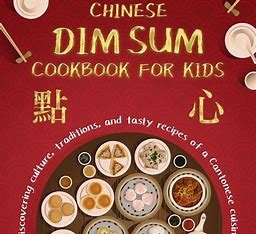Chinese dim sum is a beloved culinary tradition that involves a wide variety of small dishes typically enjoyed during brunch. Originating from the Cantonese teahouses of southern China, dim sum has become a popular dining experience worldwide.

History and Origins:
- Teahouses: Dim sum originated in the teahouses along the Silk Road, where travelers would stop for tea and small bites. Over time, these teahouses evolved into establishments where people gathered to enjoy tea and dim sum dishes.
- Yum Cha: The tradition of enjoying dim sum is often referred to as “yum cha,” which means “drink tea.” It emphasizes the importance of tea in the dim sum experience.
The Dim Sum Experience:
- Variety of Dishes: Dim sum includes a diverse array of dishes such as dumplings, buns, rolls, and desserts. Each dish is usually served in small portions, allowing diners to sample a wide variety.
- Steamed, Fried, and Baked: Dim sum dishes can be steamed, fried, or baked, offering a range of textures and flavors.
- Shared Meal: Dim sum is typically enjoyed with family and friends, with dishes served communally and shared among the table.
Popular Dim Sum Dishes:
- Har Gow (Shrimp Dumplings): Translucent dumplings filled with shrimp, known for their delicate flavor and texture.
- Siu Mai (Pork Dumplings): Open-faced dumplings filled with ground pork, shrimp, and sometimes mushrooms.
- Char Siu Bao (BBQ Pork Buns): Steamed or baked buns filled with sweet and savory barbecued pork.
- Cheung Fun (Rice Noodle Rolls): Soft rice noodle rolls filled with ingredients like shrimp, beef, or vegetables, often served with a sweet soy sauce.
- Spring Rolls: Crispy fried rolls filled with vegetables, meat, or seafood.
- Egg Tarts: Flaky pastry tarts filled with a creamy egg custard, often enjoyed as a dessert.
Tea Pairings:
- Variety of Teas: Tea is an integral part of the dim sum experience. Popular choices include jasmine tea, oolong tea, pu-erh tea, and chrysanthemum tea.
- Cleansing the Palate: Tea helps cleanse the palate between different dim sum dishes, enhancing the overall dining experience.
Dining Etiquette:
- Ordering: Traditionally, dim sum is served from carts that are pushed around the restaurant, allowing diners to choose dishes as they pass by. In modern settings, dim sum can also be ordered from a menu.
- Sharing: Dim sum is a communal meal, and it’s customary to share dishes with everyone at the table.
- Tea Service: It’s polite to fill others’ tea cups before your own, and tapping the table with your fingers is a way to thank the person pouring the tea.
Cultural Significance:
- Social Gathering: Dim sum is not just about the food; it’s a social event where family and friends gather to enjoy each other’s company.
- Tradition and Innovation: While many dim sum dishes have remained traditional, there is also room for innovation, with modern chefs creating new and exciting variations.
Conclusion:
Dim sum is a cherished culinary tradition that combines delicious food, cultural practices, and social interactions. Whether you’re enjoying classic dishes or exploring new variations, dim sum offers a delightful and memorable dining experience.
